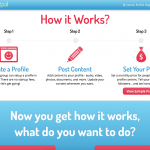5 Effective Ways Asset Tracking Software Can Benefit Your Business
Assets — fixed or variable are important for your business to generate revenues, improve business values and keep the business running smoothly. Hence, it is crucial to efficiently track your assets to streamline business operations. Asset tracking helps in providing useful insights into asset performance; aging and condition are few of the key measures to start with. It enables you to identify important ways to utilize these assets in the most productive ways.
In order to maximize asset efficiency and minimize costs, asset tracking software can help simplify operational workflows, track asset lifecycle, and manage assets across different locations easily. Asset management is a long and ongoing process from procurement till retirement. Asset tracking software is a one-for-all solution that not only caters to a few key elements but all aspects of assets and their utilization to name a few.
Managing assets with robust tracking software can benefit your business as follows:
Real-time asset management
Tracking assets in real-time is an effective way to monitor and maintain high-value assets in a systematic manner. Real-time asset management improves operational workflows and provides accurate details about the location, status, and custody of your assets.
It is difficult to manually search for assets, especially when they’re placed in a different location. This traditional method to keep looking for a particular asset among a tremendous amount of assets can result in operational delays and inefficiencies. Keeping track of minute details from order placements to maintenance needs with the help of spreadsheets is a time-consuming process that is prone to errors.
These asset management hindrances can be removed by an easy-to-use and intuitive asset tracking software. Search lookup for assets via barcode scanning can quickly locate required assets and provide detailed information about their status, location, vendor details, maintenance, etc.
The ability of the software to automatically update data in real-time streamlines asset management operations and saves time and cost for businesses.
Preventive maintenance
High-value assets have a fixed useful life whereas supporting tools have a shorter useful life. This is why assets need continuous maintenance after a certain time period. For example, it’s crucial for the owner of a heavy construction equipment business to keep track of maintenance and service schedules. A forklift sold in a bad condition can be detrimental to business image.
With the help of asset tracking software, businesses can easily set alerts for when maintenance is due. This automatically sends assets into maintenance and changes status to ‘under maintenance’. This can prevent businesses from selling faulty or damaged assets. Businesses can also flexibly set recurring dates for supporting tools, for instance, yearly warranty renewal dates can be selected to minimize reactive maintenance issues for critical support tools. Asset tracking software makes it easier to perform timely maintenance and assets are readily available in ideal conditions.
Informed decision making and budgeting
Asset tracking software helps in centralizing data related to assets. Having a complete history of assets from acquisition to the end of asset life helps in planning and budgeting for future assets effectively.
Businesses can analyze asset trends in terms of utilization, residual life, and cost of maintenance on assets. Each of these parameters can help businesses to know which assets bring more value to the business. For example, a recently purchased excavator that has low productivity but demands high maintenance can turn into a hefty investment for the business. With asset tracking software, you identify high-maintenance assets and budget for new assets accordingly.
Streamlined audits and reduced costs
Asset audits are simply verifying physical assets with the list of assets written in your records. These audits hold high value in terms of financial reporting and compliance so the accuracy of data is crucial.
Asset tracking software helps with keeping records of thousands of assets placed at different locations. The assets are verified using the software and synced over the cloud. The software also generates audit reports tailored to specific audit details. You can add or remove any details while creating custom reports and have them available whenever needed. The overall audit process is easier, faster, and accurate with the help of the software.
Enhanced workflows and increased productivity
Tracking and maintaining assets via asset tracking software saves crucial time for businesses to focus on other important strategic tasks. The manpower used during manually tracking assets can then be utilized for productive tasks. From labeling assets using RFID, putting assets into maintenance to managing orders, asset tracking software handles it all efficiently.
The hours saved can be used for production planning, strategic goal settings, or other documentation. For example, a manager handling business asset can move away from repetitive tasks of counting, updating, and locating assets to analyzing trends to gain maximum efficiency and asset utilization.
Cover Image by Freepik
Author Bio
Nisma Shakil is currently a Content Marketer at EZRentOut, the leading rental equipment software company, where she particularly enjoys writing about technological advancements, trends and actively contributes to similar guest posting opportunities. She also enjoys capturing scenic beauty, sunset at beaches, and movie times with family.







![Do Pretty Offices Create a Productive Workforce? [Infographic]](https://technofaq.org/wp-content/uploads/2017/02/pretty-offices-150x150.png)





